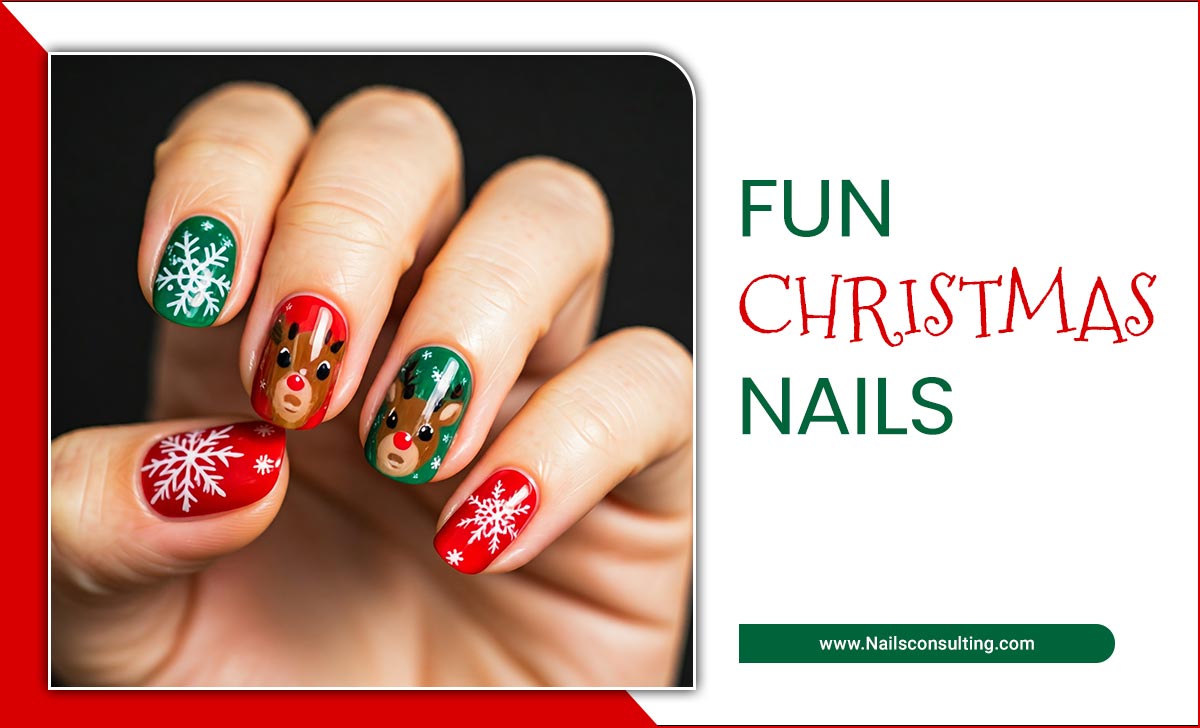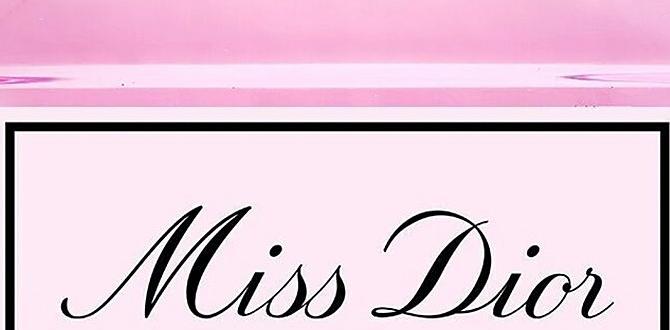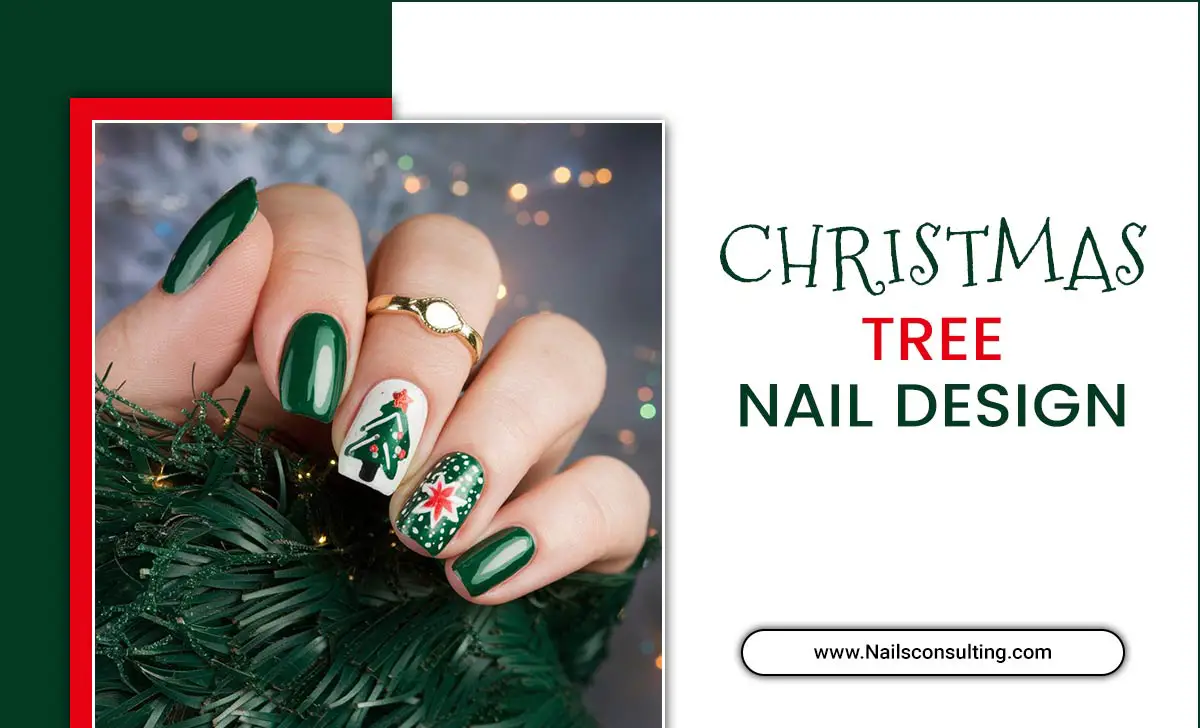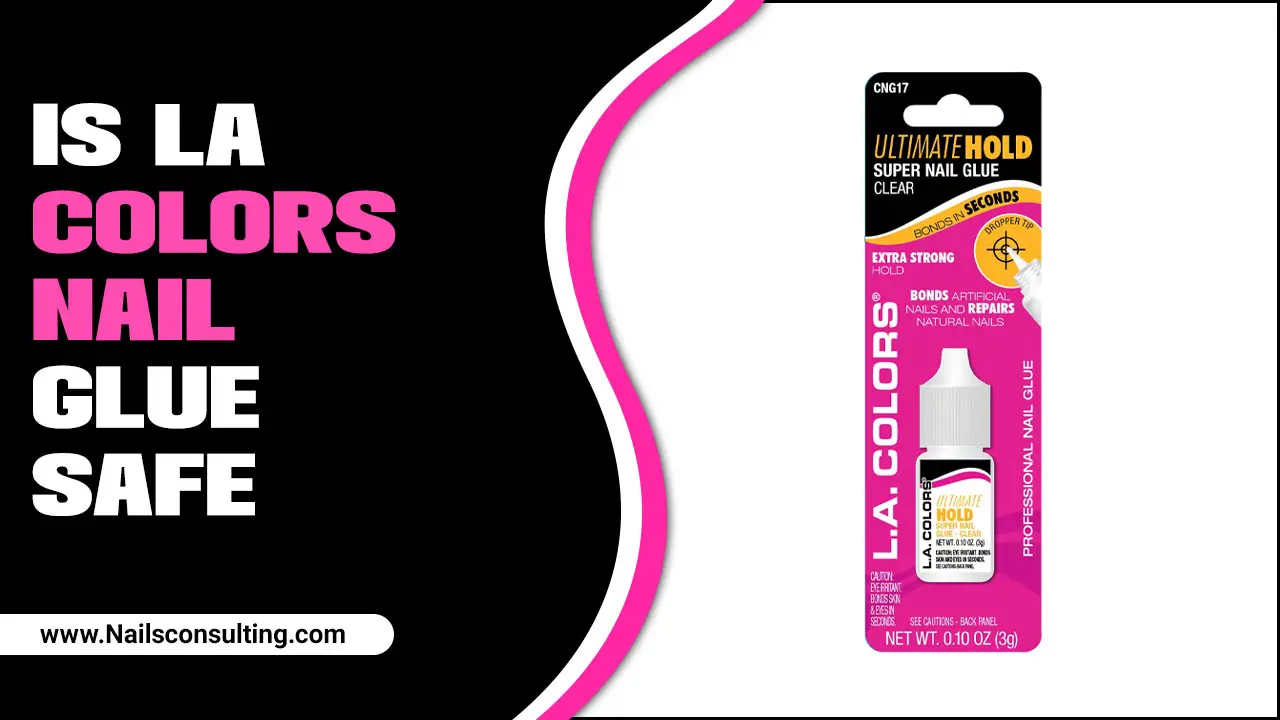Quick Summary:
Tweed French nails blend classic French tips with the cozy, textured look of tweed fabric. Achieve this stylish nail art by layering colors, creating subtle patterns with polish or paint, and finishing with a matte topcoat for that authentic tweed feel. It’s a chic, wearable trend perfect for adding sophistication to any outfit.
Ready to elevate your nail game with a touch of cozy chic? Tweed French nails are the latest must-have manicure, combining the timeless elegance of a French tip with the warm, textured vibe of your favorite tweed jacket. If you’ve ever admired that sophisticated pattern on clothing and thought, “I wish my nails could look that good,” you’re in luck! This trend is surprisingly achievable, even for beginners. Forget complicated art; we’re breaking down how to get that effortlessly stylish tweed French look right at home. Get ready to fall in love with your nails all over again as we unlock the secrets to this unique and gorgeous design!
What Exactly Are Tweed French Nails?
Imagine the classic French manicure – that clean white tip on a natural-looking base. Now, picture that tip infused with the subtle, crisscrossing lines and woven texture of tweed fabric. That’s the magic of tweed French nails! This design mimics the iconic pattern found in tweed clothing, bringing a sophisticated, slightly preppy, and wonderfully cozy aesthetic to your fingertips. It’s not about replicating the exact detail of a woven thread, but rather capturing the essence of tweed through color and line placement. Think delicate intersecting lines, subtle color variations, and a matte finish that really makes the texture pop.
Why Choose Tweed French Nails?
This manicure is more than just a trend; it’s a statement. Here’s why tweed French nails are stealing the spotlight:
- Sophisticated & Chic: They offer a refined elegance that’s perfect for both everyday wear and special occasions.
- Cozy & Warm Aesthetic: Tweed evokes a sense of comfort and luxury, making them ideal for cooler seasons or when you just want a touch of warmth.
- Versatile: This design pairs beautifully with a wide range of outfits, from casual denim to elegant dresses.
- Unique Twist: It’s a distinctive take on the classic French tip, guaranteed to turn heads.
- Achievable DIY: With a little practice, you can recreate this look at home without needing professional skills.
Essential Tools & Materials
Before we dive into the how-to, let’s gather your nail toolkit. Having the right supplies makes all the difference, especially for creating those fine tweed lines!
| Tool/Material | Description | Why You Need It |
|---|---|---|
| Base Coat | A clear protective layer. | Protects your natural nails from staining and helps polish adhere better. |
| Nude or Neutral Polish | In shades like beige, light pink, or cream. | Forms the base color for your nail, mimicking the rest of the nail in a French tip. |
| Tweed Colors (2-3) | Think contrasting but complementary shades like cream, beige, grey, black, or subtle pastels. | These will be used to create the tweed pattern on the tips. |
| Fine-Liner Nail Art Brush or Dotting Tool | A brush with very fine bristles or a tool with a small ball tip. | Essential for drawing the delicate intersecting lines that define the tweed pattern. A good quality liner brush is key for precision. You can find excellent options on sites like Nailite. |
| Matte Top Coat | A top coat that dries to a non-shiny finish. | Crucial for achieving the authentic, fabric-like texture of tweed. It mutes the shine and enhances the pattern. |
| Regular Top Coat (Optional) | A standard shiny top coat. | Can be used for a more traditional finish if matte isn’t your preference, though matte is recommended for the tweed effect. |
| Nail Polish Remover & Cotton Pads | For clean-up. | Essential for mistakes and tidying up edges. |
| Cuticle Pusher & Nail File | For nail prep. | Ensures a smooth canvas for your design. |
Step-by-Step Guide: Creating Your Tweed French Nails
Let’s get creative! Follow these steps to achieve a stunning tweed French manicure.
Step 1: Nail Preparation is Key
Start with clean, dry nails. Push back your cuticles gently using a cuticle pusher. Shape your nails to your desired length and style (a squoval or almond shape often complements French tips beautifully). Buff the surface lightly to remove any shine, which helps polish adhere better. Wipe your nails with nail polish remover on a cotton pad to eliminate oils and ensure a smooth base.
Step 2: Apply the Base Coat
Apply one thin layer of your favorite clear base coat. This is non-negotiable! It protects your nails and creates a smooth surface for the color. Let it dry completely.
Step 3: Paint the Nail Bed
Apply one or two thin, even coats of your chosen nude or neutral polish. This will be the “background” color of your nails and the base for your French tips. Ensure each coat is fully dry before applying the next. Patience here prevents smudging later on!
Pro Tip: For a super clean French tip, you can use latex tape or Q-tips dipped in remover to clean up the edges around your cuticle after this step.
Step 4: Create the French Tip Base
Now, let’s tackle the French tip. You have two main options here:
Option A (Using a Guide): Carefully apply nail guide stickers where you want your French tip to begin. Then, paint the tip area with one of your chosen tweed colors (e.g., a creamy beige). Let it dry completely before removing the guides. Repeat with another color if desired for a layered look on the tip itself.
Option B (Freehand): Gently freehand a smile line across the tip of your nail using a thin brush or the polish applicator. Alternatively, you can paint the entire tip area with one of your tweed colors. Again, let it dry fully.
We recommend doing this on one nail at a time, especially when you’re starting out, to avoid mishaps. For a truer tweed effect, consider using a light, neutral shade as the base for your tip.
Step 5: Bring on the Tweed Texture!
This is where the magic happens! Take your fine-liner nail art brush and your other two tweed colors (e.g., a light grey and a thin black or dark brown). Dip your brush lightly into one of the colors. On the tip of your nail, carefully draw a few thin, short, intersecting lines. Think of an irregular grid or weave. Don’t be afraid to make small gaps and overlaps – this adds to the authentic, slightly imperfect look of tweed.
Here’s a breakdown of how to achieve the pattern:
- Line Placement: Draw a few nearly parallel vertical lines.
- Intersecting Lines: Then, draw a few horizontal lines that cross over the vertical ones.
- Add Depth: Use a slightly darker shade (like black or dark grey) to add a few more subtle lines, perhaps slightly thicker or more prominent in places, to mimic shadows and give the pattern dimension.
- Spacing: Keep the lines fine and the spacing irregular. The goal is to suggest texture, not create a perfect replica.
If you’re using a dotting tool, you can create small dots that represent the “threads” and then connect them with tiny lines for a similar effect.
Step 6: The Crucial Matte Finish
Once your tweed pattern is perfectly imperfect and completely dry, it’s time for the secret weapon: the matte top coat! Apply one to two thin layers of matte top coat over the entire nail, including the tip. This is what transforms the glossy polish into a soft, textured effect that truly resembles tweed fabric. Let it dry completely. The matte finish is essential for capturing that cozy, woven feel.
If you prefer a hint of shine, you can apply a regular shiny top coat over the matte top coat ONLY on the colored tip area, leaving the rest of the nail matte. However, for the most authentic tweed look, a full matte finish is recommended.
Step 7: Clean Up and Admire!
Use a small brush dipped in nail polish remover to clean up any stray polish around your cuticles or fingertips. Take a moment to admire your handiwork! You’ve just created sophisticated tweed French nails.
Color Palettes for Your Tweed Tips
The beauty of tweed French nails is their adaptability to different color stories. Here are some ideas to inspire your next set:
Classic Neutrals
This is the most traditional and perhaps the easiest to start with. It perfectly mimics traditional tweed.
- Base: Nude or cream
- Tweed Colors: Light beige, medium grey, and thin black lines.
Monochromatic Magic
If you love a single color family, try this. It’s subtle and chic.
- Base: Pale pink or milky white
- Tweed Colors: Various shades of pink (e.g., blush, rose, dusty rose) with thin white or grey lines.
Subtle Pastels
Perfect for spring or a softer take on the trend.
- Base: Sheer nude or pale peach
- Tweed Colors: Mint green, baby blue, pale lavender, and thin white lines.
Bold & Beautiful
For those who love a pop of color!
- Base: Deep navy or rich burgundy
- Tweed Colors: Contrasting colors like cream, gold, or a deep forest green, with thin black or white lines.
When choosing your colors, remember that the matte topcoat will slightly mute the vibrancy, so don’t be afraid to go slightly bolder than you might normally.
Maintaining Your Tweed French Nails
Want your tweed French nails to last and look their best? A little care goes a long way:
- Avoid Harsh Chemicals: Wear rubber gloves when doing chores involving water and cleaning products to protect your polish.
- Moisturize: Keep your hands and cuticles hydrated with cuticle oil and hand cream. Healthy cuticles make for a neat nail appearance.
- Gentle Filing: If you need to adjust the shape, use a fine-grit nail file and file in one direction only to avoid chipping the polish.
- Touch-Ups: If a tiny chip occurs on the tip, you might be able to carefully touch it up with a bit of polish and your fine-liner brush, followed by a matte top coat touch-up.
- Reapply Top Coat: Every few days, applying an extra layer of your regular or matte top coat can help extend the life of your manicure and keep the colors vibrant.
By following these simple maintenance tips, you can enjoy your stylish tweed French nails for longer.
Troubleshooting Common Issues
Even the most experienced nail artists run into snags! Here are some common issues and how to fix them:
Issue: Lines are too thick or messy.
Solution: Use less polish on your fine-liner brush. Wipe off excess on a paper towel before applying to the nail. Practice drawing thin lines on a piece of paper first to get a feel for the pressure and movement. Thinner lines are key to the tweed look!
Issue: Polish smudging while drawing tweed lines.
Solution: Ensure each layer of polish is completely dry before you start drawing the tweed pattern. If impatience gets the better of you, try using a quick-dry spray or a fan to speed up drying times. You can also use a high-quality quick-dry top coat as your French tip base (before drawing lines) to lock in color faster.
Issue: Matte top coat looks streaky or uneven.
Solution: Apply your matte top coat in thin, even strokes. Avoid going over the same area multiple times while it’s still wet. Sometimes, a streaky matte finish can happen if the underlying polish isn’t fully dry. Ensure all your tweed lines are completely cured before applying the matte top coat.
Issue: The tweed pattern doesn’t look textured enough.
Solution: Experiment with using three different shades for the tweed lines. A light base, a slightly darker intersecting color, and then very fine dark lines (like black or dark brown) to create depth and the illusion of shadow. Also, remember the matte top coat is crucial for that textured appearance! A shiny top coat will flatten the effect.
Issue: French tip line is wobbly.
Solution: Use nail guide stickers for a perfectly straight line. If freehanding, rest your wrist on a stable surface and use a steady hand. You can always clean up the edge with a small brush dipped in nail polish remover for a crisp finish. For more on shaping French tips, resources from places like the Harvard Health explain the importance of proper nail preparation which contributes to cleaner application.
FAQ: Your Tweed French Nail Questions Answered
Q1: Can I do tweed French nails with gel polish?
A1: Absolutely! Gel polish can provide a smooth, durable canvas for your tweed design. Apply your base, nude color, and tip color as usual, curing each layer under an LED or UV lamp. Then, use gel art paints or gel polish with your fine-liner brush to create the tweed pattern, and finish with a matte gel top coat, curing the final layer.
Q1: How do I create a very thin line for the tweed pattern?
A2: The key is a good quality fine-liner brush and controlling the amount of polish on it. Load a tiny amount of polish onto the tip of the brush. Gently rest the brush on your nail and drag it smoothly with minimal pressure. practice on a spare nail or piece of paper first!
Q3: What kind of “tweed” colors are best?
A3: Classic tweed often uses neutrals like beige, cream, grey, and black. However, you can adapt the concept to any color palette: think pastel blues and pinks for spring, or deep jewel tones for autumn. The important part is the subtle interplay of 2-3 shades and the fine, intersecting lines.
Q4: My matte top coat makes the colors look dull. What can I do?
A4: Ensure your underlying colors are fully dry before applying the matte top coat. Sometimes, the colors can look a bit muted because the matte finish absorbs light rather than reflecting it. You might need to use slightly more vibrant colors for the tweed pattern itself to compensate, or do two thin coats of matte top coat for a smoother, more consistent finish.
Q5: Is this design too complicated for a beginner?
A5: It might take a little practice, but it’s definitely achievable for beginners! Start by focusing on getting neat French tips. Then, practice drawing simple intersecting lines. Don’t aim for perfection on your first try; the slightly irregular nature of tweed can be forgiving. Using nail guides for the French tip can simplify the process immensely.
Q6: Can I use regular nail polish or do I need special art paints?
A6: You can absolutely use regular nail polish! Most people achieve tweed French nails using standard polishes along with a fine-liner brush. Special nail art paints are also an option and can sometimes offer better control for very fine lines, but they are not required to achieve this look.
Beyond the Basics: Customizing Your Tweed French Nails
Once you’ve mastered the basic tweed French, don’t stop there! Think about ways to personalize your manicure:
- Accent Nail: Apply the full tweed pattern to just one or two accent nails (like your ring finger) and keep the rest as a classic French tip or a solid nude.
- Color Blocking: Instead of a uniform tip, try color-blocking sections of the tip in different tweed patterns or colors.
- Glitter Accents: Add a touch of sparkle by applying a fine, glitter polish on one of the “




